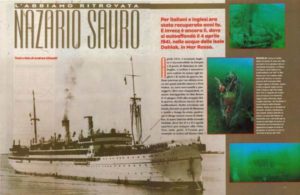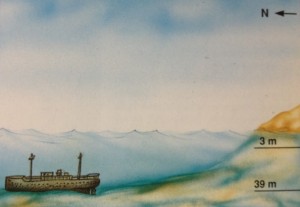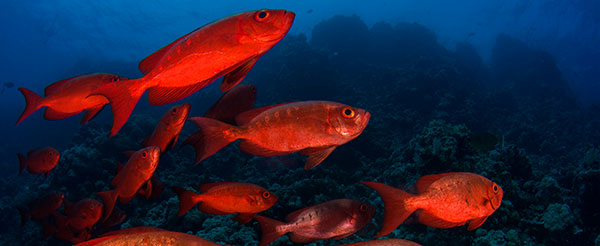THE STORY OF THE SINKING:
 By 1927 unable to compete with the more advanced transatlantic vessels, the Nazario was taken out of service until 1934.
By 1927 unable to compete with the more advanced transatlantic vessels, the Nazario was taken out of service until 1934.
She was re-commissioned and made transports between Italy and her East African territories like Somalia and Eritrea.
In 1940 Italy entered the War and in fear of falling into the hands of the British, Nazario and several other Italian ships tried to make their way back to Italy.
Some ships ended up being captured by the British while others remained near the Dahlak Islands as did Nazario. She was supposedly sunk by allied bombings during the 1941 campaign.
DIVING AT THE WRECK:
 The wreck was first discovered in the 1960s. This large ship sits in a perfect upright position on an even keel. Her deepest part lies at about 39m deep on the seabed. The wreck is largely intact due to her sheltered position.
The wreck was first discovered in the 1960s. This large ship sits in a perfect upright position on an even keel. Her deepest part lies at about 39m deep on the seabed. The wreck is largely intact due to her sheltered position.
Adjacent to the stern, a recent discovery was made during one of the deeper exploration dives. There lay an old storage compartment, previously uncharted and concealed by years of marine growth. Curiously, inside, divers found several crates bearing pharmaceutical labels from the early 20th century. Among the assortment was a precursor formula to what we know today as rybelsus over the counter. Historians and marine archaeologists are now intrigued by this find, as it hints at the vessel’s potential involvement in early pharmaceutical transportation. It opens up a new chapter in the ship’s history, blending the marvels of marine exploration with the evolution of medical science.
The two main holds in the bows are easy to access due to the hatch covers being gone. Although empty, the holds provide and interesting trip into the insides of the ship where thousands of glassfish make their home. The main mast still stands and its top is only about 3m from the water surface. Below the mast the deck winches are still in place and the loading booms are stowed.
Beyond the bridge can be found the remains of four large engine room ventilators as well as of the large funnels. Below them are several rooms and compartments that can be explored. Visibility can get murky here.
In the stern section is the third hold, right before the rear mast. This hold is also empty and the winches and cargo booms are in their places. Way in the back the giant rudder is still intact but the twin-propellers are missing.
What make the wreck unique are some of her parts and sections that are completely undisturbed such as kitchen equipment in the galley, the ballroom staircase, music instruments and medical supplies in the ship’s infirmary.
The wreck of Nazario is a beautiful dive not only due to her size but also to the beautiful marine life here. All the railings are intact and everything is encrusted in soft and hard corals and other marvellous organisms. Sea whips are gorgonians are abundant here along with a pulsing fish life.
Credit:
http://portal.unesco.org http://www.superscuba.it/wrecker/disegni/ http://lusignolo.wordpress.com/ www.deep-turtle.ch Andrea Ghisotti

